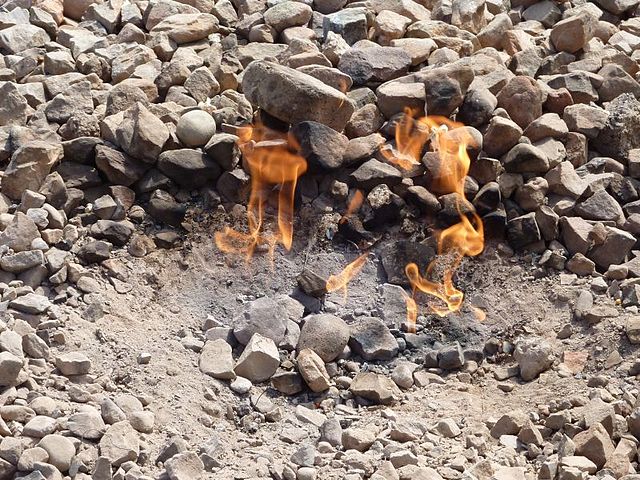Liquefied natural gas (LNG) is natural gas (predominantly methane, CH4, with some mixture of ethane, C2H6) that has been cooled down to liquid form for ease and safety of non-pressurized storage or transport. It takes up about 1/600th the volume of natural gas in the gaseous state at standard conditions for temperature and pressure.
A liquefied natural gas ship at Świnoujście LNG terminal in Poland
President Trump visits the Cameron LNG Export Terminal in Louisiana, May 2019.
LNG side tank on an LNG-converted Scania R410
The LNG-powered Crude Oil Tanker Njord DF, moored at the BP Oil Refinery, Jetty, Western Australia
Natural gas is a naturally occurring mixture of gaseous hydrocarbons consisting primarily of methane (97%) in addition to various smaller amounts of other higher alkanes. Low levels of trace gases like carbon dioxide, nitrogen, hydrogen sulfide, and helium are also usually present. Methane is colorless and odorless, and the second largest greenhouse gas contributor to global climate change after carbon dioxide. Because natural gas is odorless, odorizers such as mercaptan are commonly added to it for safety so that leaks can be readily detected.
Natural gas burning on a gas stove
Burning of natural gas coming out of the ground
A gas bill from Baltimore, Maryland, 1834, for manufactured coal gas, before the introduction of ground-extracted methane gas.
Natural gas drilling rig in Texas, US








